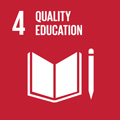- Docente: Stefano Benazzi
- Credits: 6
- SSD: BIO/08
- Language: Italian
- Teaching Mode: In-person learning (entirely or partially)
- Campus: Ravenna
- Corso: Second cycle degree programme (LM) in History, preservation and enhancement of artistic and archaeological heritage and landscape (cod. 9218)
-
from Mar 16, 2026 to Mar 20, 2026
Learning outcomes
The course aims to provide the knowledge and technical-scientific skills necessary for 3D data acquisition and reconstruction of human skeleton and mummified remains retrieved from archaeological excavations or museums, in order to create 3D digital models useful for further specific analysis, 3D printing, enhancement and exhibition. At the end of the course, students will learn to digitally acquire human remains using 3D surface scanner and to use software for post processing surface data and segmenting/visualizing image data from (micro)-CT sources, thus obtaining 3D digital models of the bones, which are essential for their restoration, analysis and exhibition.
Course contents
Introduction to 3D scanning: technologies and working principles; contact and non-contact scanning systems, reflective and transmissive systems; how to choose the 3D acquisition tool, technical considerations and device characteristics; scan protocol. Examples of 3D scans and digital reconstructions.
Introduction to post processing surface data: Geomagic Design X software workflow, set parameters and tools, import point clouds, point clouds alignment, noise cleaning, mesh generation; import meshes, healing defects, 3D model construction, save data, save project, export data; mesh editor, creating cutting planes, sections, curves and measurements (linear, angular, area and volume) of the digital models.
Readings/Bibliography
- Notes from the lessons
- A scientific article on a topic of the course chosen by the student
- Scientific papers uploaded in the Virtuale platform
Optional (mandatory for non-attending students)
- Weber GW, Bookstein FL. Virtual Anthropology - A Guide to a New Interdisciplinary Field. Springer Verlag, Wien, New York, 2011.
Teaching methods
The course is based on traditional lectures covering program topics and practical exercises for post-processing 3D data using computer software.
As concerns the teaching methods of this course unit, all students must attend Module 1, 2 [https://www.unibo.it/en/services-and-opportunities/health-and-assistance/health-and-safety/online-course-on-health-and-safety-in-study-and-internship-areas] on Health and Safety online
Assessment methods
Assessment of learning takes place through a dual evaluation process: a practical examination and an oral examination.
The practical exam involves the assessment of the digital models developed during the course activities and is organized into the following phases:
- Processing of data obtained through 3D scanning tools;
- Creation of 3D digital models, useful for subsequent analyses, 3D printing, enhancement, and 3D museum curation;
- Virtual reconstruction of missing parts.
The oral examination is scheduled to begin from the first available session on the calendar, immediately following the conclusion of the lectures, and is centered on the topics covered during the course.
In the oral examination, the student is required to delve into a specific course topic through the reading of a scientific article of their choice. Subsequently, their preparation will be assessed on other topics from the program through the study of a series of scientific articles uploaded specifically to the Virtual Portal.
Students must demonstrate that they have acquired a strong foundation in scientific knowledge on the topics covered and have mastered both the theoretical and practical aspects related to 3D acquisition and the creation of digital models of human remains.
The final grade will take into account the performance in the practical examination, the depth of scientific and methodological understanding of the subjects covered, the clarity of expression by the student, and their ability to conduct a critical and reasoned analysis, including any relevant interdisciplinary connections.
According to the University’s guidelines, the following criteria will be applied:
- A comprehensive and well-structured understanding of the topics covered in lectures or in the assigned readings, combined with the ability to engage critically with the material, clear and effective expression, and the accurate use of disciplinary terminology, will be rewarded with excellent marks (28–30).
- A predominantly mechanical or memorized knowledge of the subject matter, together with limited analytical and synthetic skills and/or a generally correct but not always precise use of language, will result in good or fair evaluations (23–27).
- Gaps in preparation and/or an inadequate command of language, even when accompanied by a minimal understanding of the course content, will lead to barely satisfactory results (18–22).
- Serious deficiencies in preparation, inappropriate language, and a lack of ability to navigate the bibliographic materials provided during the course will result in a failing grade.
Teaching tools
Lectures will be supported by power point presentations, osteological materials, 3D surface scanner, workstations with software for post-processing, segmentation and visualization of 3D image data.
Students who are affected by learning disability (DSA) and in need of special strategies to compensate it, are kindly requested to contact the Teacher, in order to be referred to the colleagues in charge and get proper advice and instructions.
Office hours
See the website of Stefano Benazzi
SDGs

This teaching activity contributes to the achievement of the Sustainable Development Goals of the UN 2030 Agenda.
